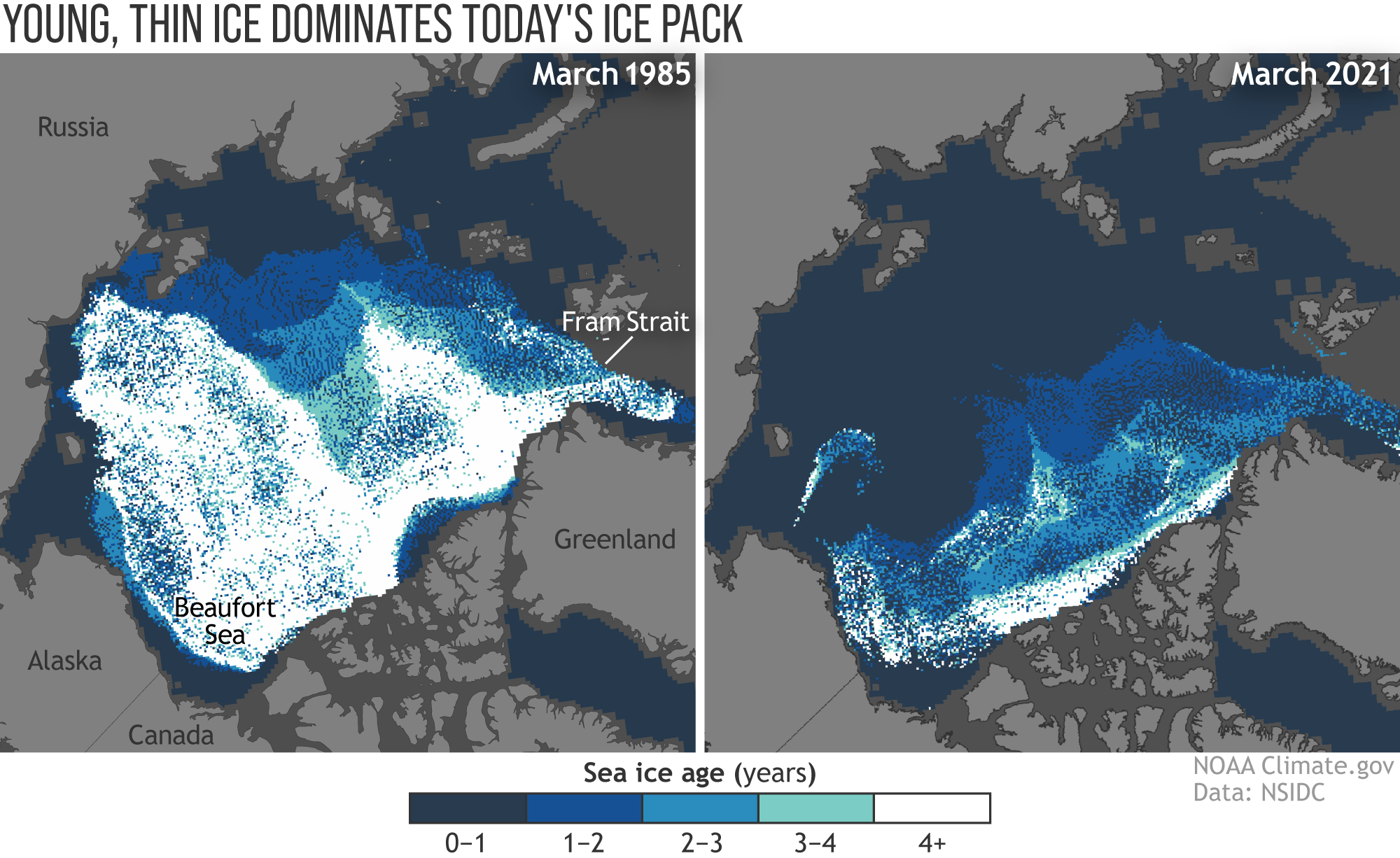2021 Arctic Report Card: Winter sea ice pack likely thinnest on record
Details
Paper-thin when it first freezes, sea ice thickens over time, making ice age a proxy for ice thickness. Arctic sea ice that has survived multiple summers is often two or more meters thick. Its greater thickness (and therefore volume), combined with its lower salt content, makes old ice more likely to survive the summer melt season than new ice.
According to the 2021 Arctic Report Card, old ice in the Arctic Ocean has plummeted to a tiny fraction of what it once was. These maps compare sea ice age in the Arctic Ocean around the time of the winter maximum. Ice that is at least four years old is white. Younger ice appears in darker shades of blue. In March 1985 (left), ice at least four years old stretches over a substantial portion of the ocean surface, practically dominating the ice pack. In March 2021 (right), ice at least four years old is largely confined to a thin strip north of the Canadian Archipelago.
Sea ice age is estimated from satellite monitoring of sea ice motion, and the record goes back nearly 40 years. Over the past decade or so, new satellite sensors have also been measuring ice volume. After combining data from both satellite products over the previous three years, authors of the Arctic Report Card: Update for 2021 found that the 2020–2021 winter likely had the thinnest sea ice on record.
Reference
Meier, W.N., Perovich, D., Farrell, S., Haas, C., Hendricks, S., Petty, A., Webster, M., Divine, D., Gerland, S., Kaleschke, L., Ricker, R., Steer, A., Tian-Kunze, X., Tschudi, M., Wood, K. 2021. Sea ice. Arctic Report Card: Update for 2021.
